Vietnamese Xoi, or Vietnamese sticky rice, is a traditional dish with a multitude of flavors. Learn all about its diversity, its variations, and its cultural significance.
The civilization of rice has opened up a diverse and refined culinary culture for the Vietnamese. From the grain of rice, over time, the Vietnamese have created hundreds of different dishes, each carrying a unique flavor and a distinctive mark of their cultural identity. Among these, sticky rice, although modest, occupies an important place in the hearts of the Vietnamese. Simple, yet refined, such is the essence of Vietnamese Xoi. No matter the time, whether in street stalls or elegant restaurants, Vietnamese sticky rice is always prepared with finesse and care by the Vietnamese, thus bringing a unique attraction to Vietnamese cuisine. In this article, let's discover together the culture of Vietnamese Xoi and the types of Xôi you absolutely must taste during your visit to Vietnam.
- Morning sticky rice basket - A simple and familiar image evoking peaceful daily life
- Glutinous rice - Nature's gift at the heart of Vietnamese cuisine
- Must-try sticky rice dishes in Vietnam
- Vietnamese red sticky rice - The red of luck and prosperity
- Vietnamese sticky rice with mung bean - Flavor of the morning in Hanoi's streets
- Green sticky rice - The delicate fragrance of Hanoi's autumn
- Corn sticky rice - Rustic and familiar sweetness
- Five-colored sticky rice - Harmony of colors and mountain beliefs
- Mung bean sticky rice with separate grains - Refined and flavorful
- Vietnamese savory sticky rice - A rich and aenerous alliance of flavors
Morning sticky rice basket - A simple and familiar image evoking peaceful daily life
“Ai xôi đây… Xôi đây… Xôi nóng hổi đây…” ("Who wants Vietnamese xoi… Vietnamese xoi here… Piping hot xoi here…").
From dawn, even before the sun rises behind the trees… while children are still asking for 5 more minutes of sleep, the sticky rice baskets of mothers and grandmothers begin their bustling journey. The piercing cry of the vendor resonates, feet shuffle, skillful hands prepare portions, and the shoulders carrying the baskets continue to traverse the streets. The sticky rice pots steam, carrying with them the sweet aroma of rice, whetting the appetite of hungry stomachs and inviting them to savor this special gift of rice.
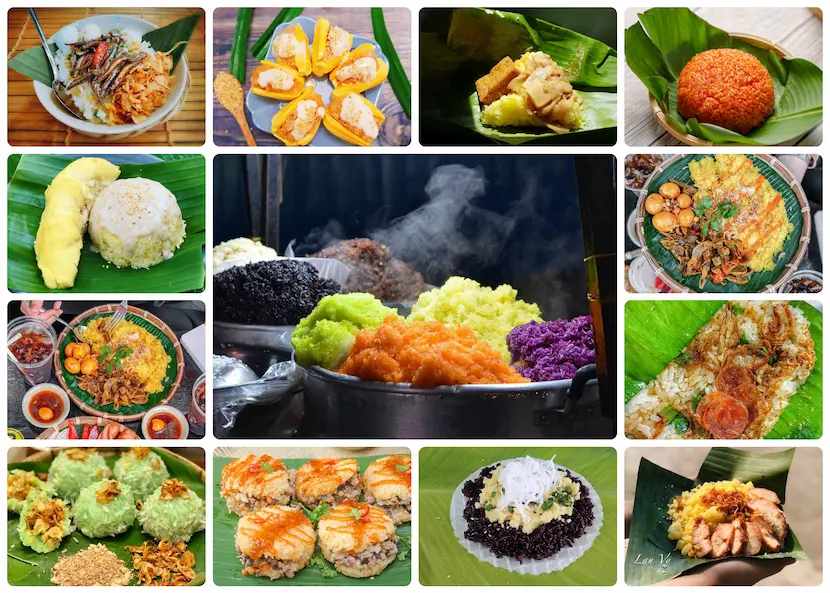
Xôi comes in two main types: on the one hand, sweet Xôi, such as Mung beans sticky rice, Black beans sticky rice, Coconut milk sticky rice, Sticky rice with magenta plant leaves, Sticky rice with jackfruit, Corn sticky rice, Mung beans sticky rice in sweet soup, Lotus seed sticky rice, and Green sticky rice. On the other hand, savory Xôi, such as Braised pork sticky rice, Mixed savory sticky rice, Fish sticky rice, Chicken sticky rice, Duck sticky rice, Crab sticky rice, or Ant egg sticky rice, etc.
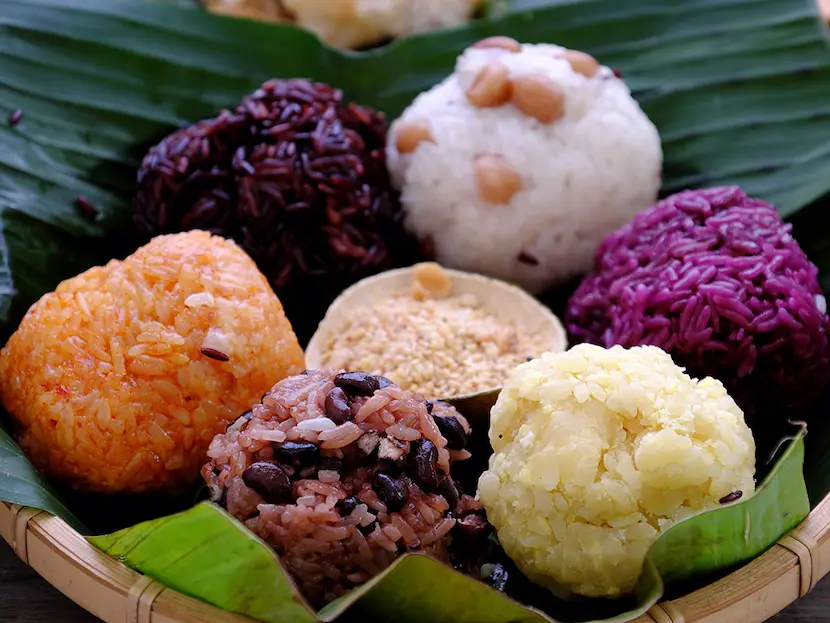
Each region of Vietnam has its own way of preparing and eating sticky rice. In the North, people often favor scallion oil; almost all xôi dishes include fried shallots and green scallion oil, and they tend to prefer sticky rice with a light savory flavor, less sweet. Conversely, Southerners enjoy sticky rice with a sweeter taste, often eating it with coconut milk, and if they have savory xôi, it will be the richly savory kind. Central Vietnamese, with their habit of eating spicy food, often sprinkle a generous amount of pepper on their xôi dishes. Even with just xôi vò (mung bean sticky rice), we have up to three versions: xôi vò with fried shallots, xôi vò with coconut milk and roasted peanuts, and xôi vò sprinkled with pepper.
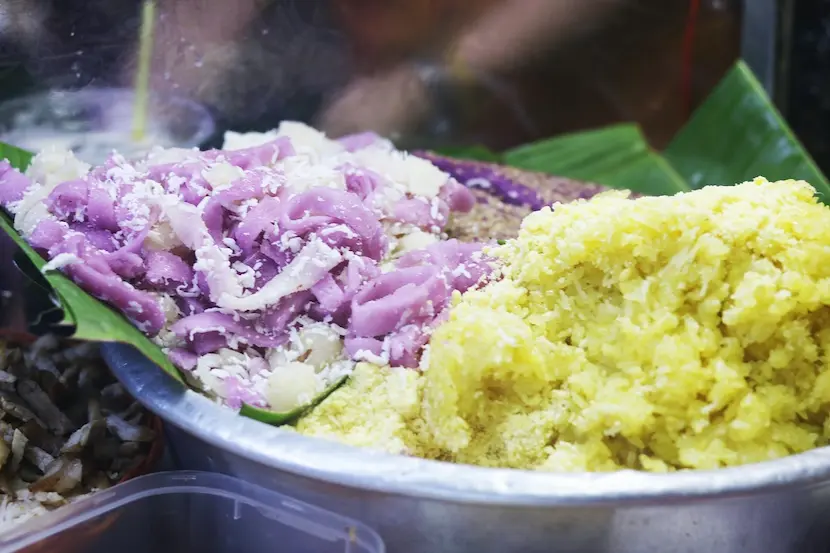
Although Xôi is a popular and modest dish, it nevertheless carries a solemn symbolism and continues to feature in important Vietnamese events to this day. During longevity celebrations, incense offerings to thank heaven, earth, and ancestors for their birth or wedding ceremonies, death anniversaries, full moon day offerings, Tet (Lunar New Year), etc., Xôi is indispensable. Till this day, no one has been able to estimate how many varieties of Xôi exist in Vietnam. Each region has its own recipes, and depending on the seasons, people find different ways to prepare it to enhance flavor. This contributes to the diversity of Vietnamese cuisine and also forges the identity, the quintessence of Vietnamese Xoi.
>> See more: The importance of rice in Vietnamese life
Glutinous rice - Nature's gift at the heart of Vietnamese cuisine
Sticky rice, or Xôi in Vietnamese, is a dish made from a special type of rice called gạo nếp(glutinous rice grains), different from gạo tẻ (regular rice grains). Unlike regular rice, glutinous rice grains needs less water and must be soaked for several hours before cooking in traditional bamboo baskets to ensure even cooking and a soft texture.
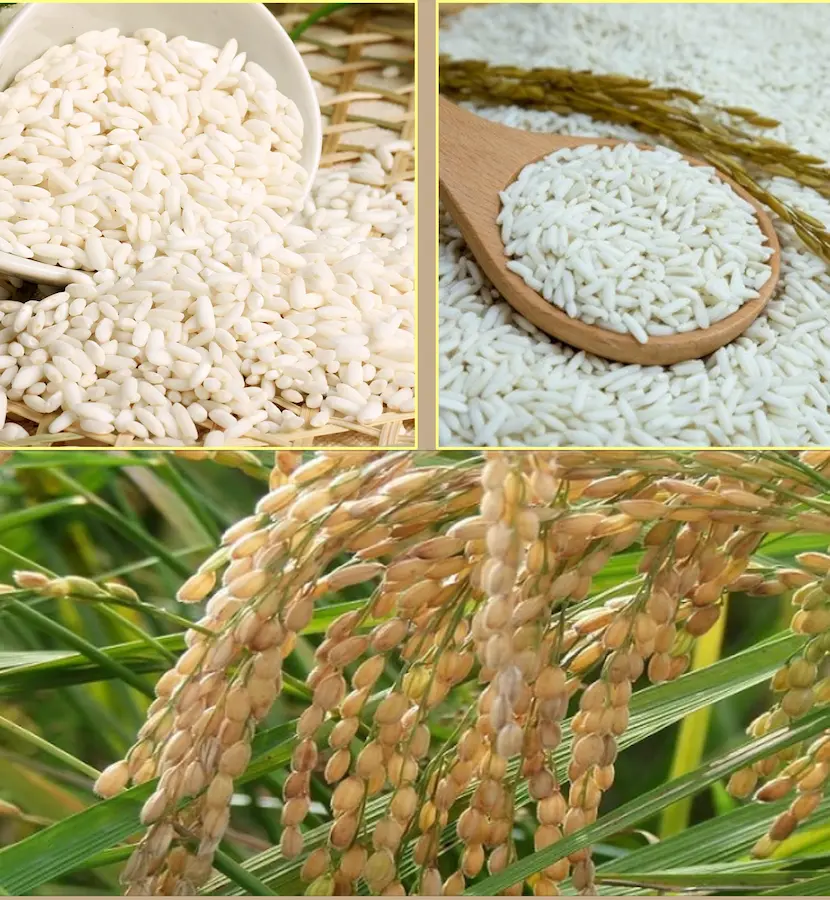
Thanks to its unique quality, glutinous rice has become the base of many Vietnamese dishes, sweet or savory, simple or sophisticated, from the daily Xôi sold on the street, to traditional cakes like Banh Chung or round sticky rice cake, to ceremonial dishes served at grand occasions. It is a humble but essential ingredient, deeply rooted in the country's culinary culture.
Vietnam also has several regional varieties of glutinous rice renowned for their exceptional quality. Among the most famous are nếp cái hoa vàng from the North, nếp Tú Lệ from Yen Bai, nếp nương from the northwestern rice terraces, nếp cẩm (black sticky rice), and nếp chùm. These varieties contribute to the richness and diversity of Vietnamese sticky rice.
Must-try sticky rice dishes in Vietnam
Vietnamese sticky rice comes in many versions, sweet or savory. Each type reflects a regional taste, a tradition, or a particular occasion.
Vietnamese red sticky rice - The red of luck and prosperity
Vietnamese red sticky riceor Xôi gấc is a vibrant dish thanks to the red pulp of spiny bitter gourd, mixed with soaked sticky rice and a pinch of salt. It can be eaten plain or accompanied by savory meats like giò (Vietnamese sausage). For a sweet version, sugar, grated coconut, and mung beans are added. This dish is omnipresent during major celebrations, especially Tet and weddings, as a symbol of luck and prosperity.

Vietnamese sticky rice with mung bean - Flavor of the morning in Hanoi's streets
Vietnamese sticky rice with mung bean or Xôi xéo is an iconic breakfast specialty of Hanoi. The yellow sticky rice, colored with turmeric or naturally golden from cooking, is topped with hand-mashed mung bean paste, a generous layer of crispy fried shallots, and often served with Vietnamese pork sausage. This dish perfectly embodies the culinary elegance of the North: humble yet refined.
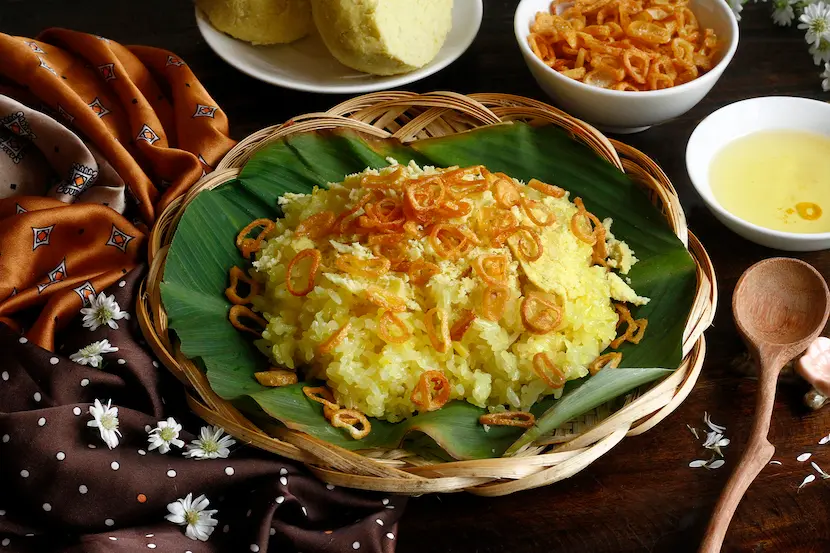
Green sticky rice - The delicate fragrance of Hanoi's autumn
Xôi cốm (green sticky rice) is a delicate autumn specialty of Hanoi, prepared from young, tender sticky rice grains harvested early, then lightly roasted and flattened. Mixed with grated coconut and steamed, Xôi cốm is often eaten with sweet lotus or a ripe banana. Light and fragrant, it embodies all the nostalgic sweetness of autumn in Northern Vietnam.

Corn sticky rice - Rustic and familiar sweetness
This very popular Xôi in the Vietnamese countryside is a harmonious combination of sweet corn, tender sticky rice, roasted sesame seeds, and a little sugar. Sometimes, a touch of grated coconut enriches the taste. It evokes childhood flavors, simple but unforgettable.
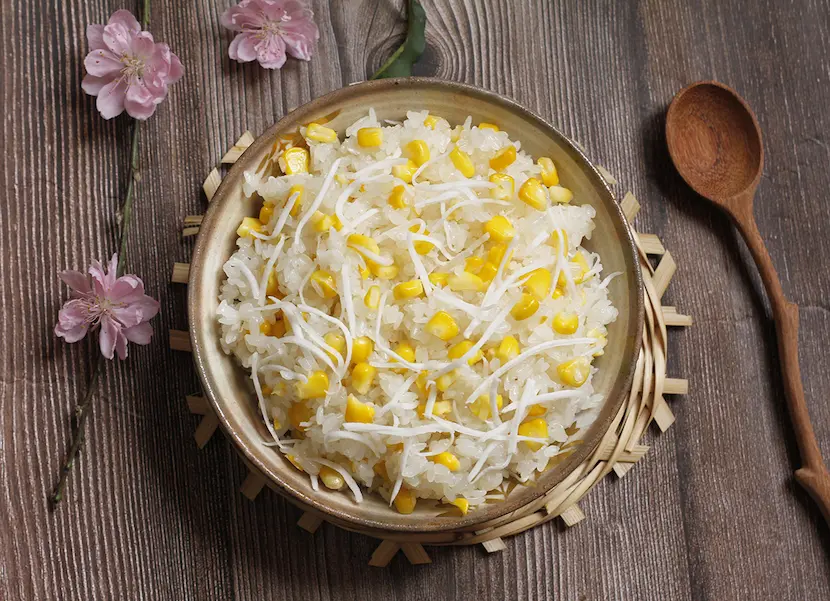
Five-colored sticky rice - Harmony of colors and mountain beliefs
Xôi ngũ sắc, literally "five-colored sticky rice", is a specialty of the ethnic minorities of northern Vietnam. Prepared from naturally colored sticky rice (red with spiny bitter gourd, green with fragrant leaves, purple with magenta plant leaves, yellow with turmeric, and plain white), this dish is both a visual work of art and a ceremonial delicacy.
Each color carries a symbolic meaning related to the natural elements – metal, wood, water, fire, and earth. This sticky rice is often prepared during traditional festivals, weddings, or spiritual rituals, expressing wishes for prosperity, happiness, and unity. Besides its beauty, its soft texture and vegetal aromas make it a unique taste experience, imbued with ancestral culture.
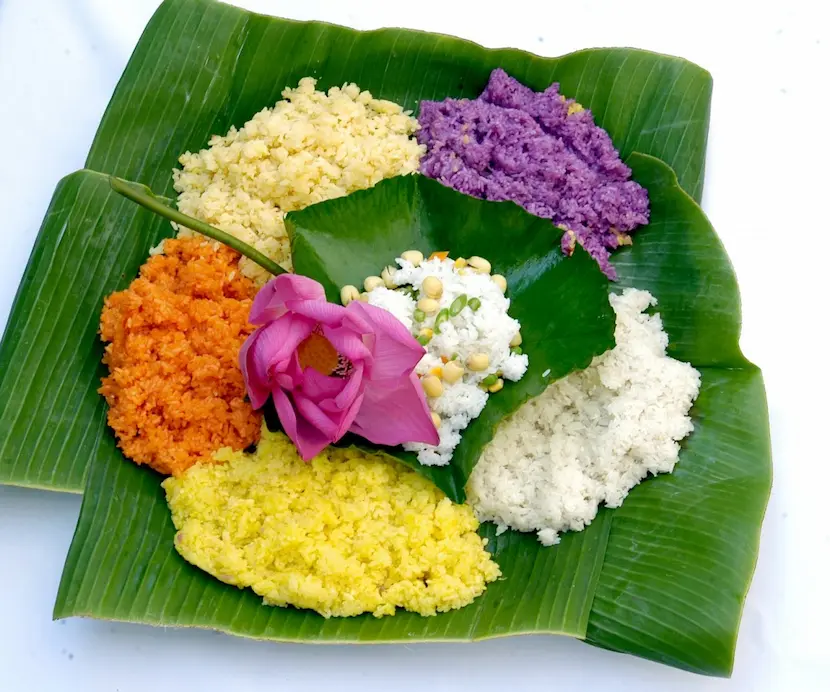
Mung bean sticky rice with separate grains - Refined and flavorful
Xôi vò is an indispensable dish during traditional festivals, ancestral ceremonies, or Vietnamese weddings. It is distinguished by its texture: the grains are separate but remain soft, thanks to the mixture of sticky rice and crushed mung bean. The mung beans are steamed, then finely crushed. This mixture is hand-rubbed so that each grain is evenly coated. The result is a delicate Xôi, neither sticky nor dry, often served with mung bean sweet soup or enjoyed alone, in its simplicity.
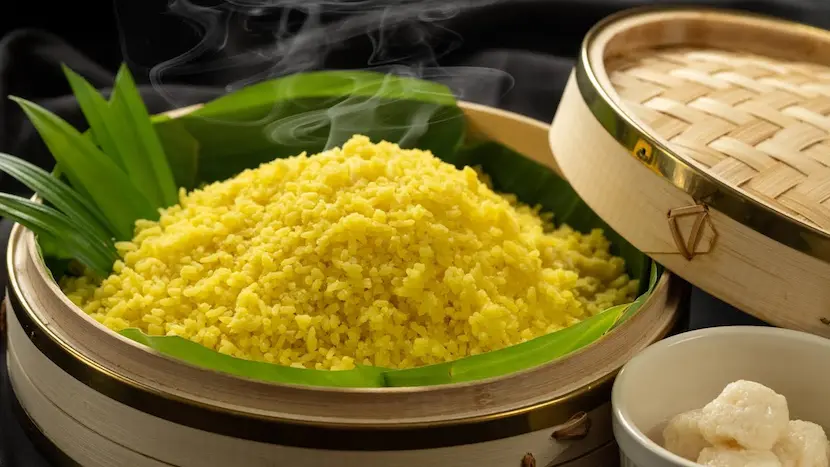
Vietnamese savory sticky rice - A rich and aenerous alliance of flavors
Unlike the sweet and delicate varieties, Xôi mặn (savory sticky rice) seduces with its generosity, its rich taste, and its ability to satisfy hunger. It is plain sticky rice (or sometimes mixed with beans) topped with a multitude of savory ingredients: braised pork, liver pâté, Vietnamese sausage, shredded chicken, quail eggs, Vietnamese ham, fried shallots, and sometimes even crispy roasted pork.
This dish varies differently depending on the region. In Hanoi, the famous Xôi xéo - with yellow mung beans, scallion oil, and turmeric - is a morning must-have. In Ho Chi Minh City, Xôi mặn is even more substantial, often served in boxes filled to the brim, accompanied by a typical soy sauce. Versatile, nourishing, and inexpensive, savory sticky rice has become an emblem of street food in Vietnam.
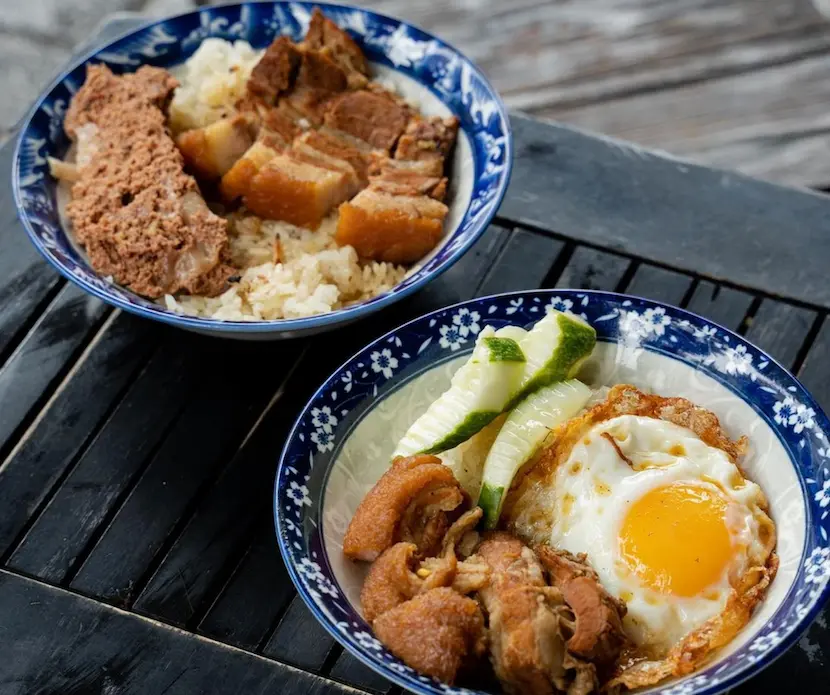
Through its many forms - sweet, savory, colorful, or minimalist - sticky rice accompanies the Vietnamese at all stages of their lives, from the most solemn celebrations to hurried mornings in misty alleys. Tasting Vietnamese sticky rice means entering the intimacy of its local culture.
Want to discover the richness of Vietnamese cuisine in all its authenticity? IZITOUR, a local travel agency, assists you in creating a tailor-made tour, combining authentic culinary experiences and cultural immersion. Contact us now at [email protected] to start planning an unforgettable trip to Vietnam.
See more:
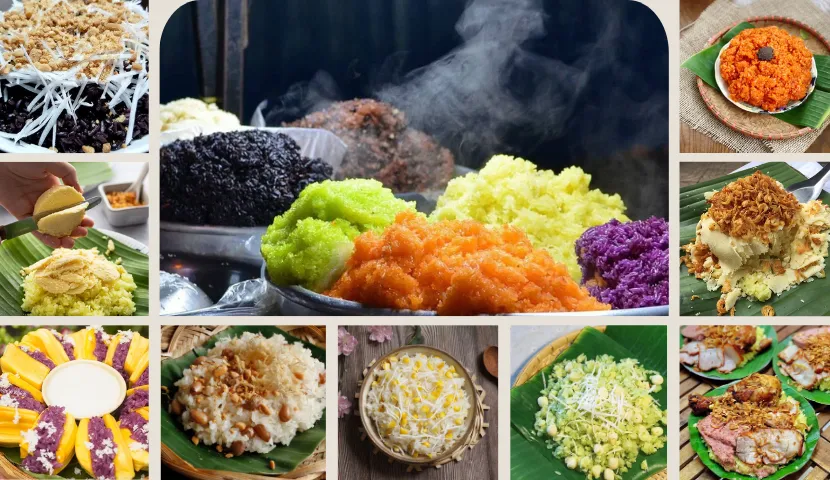







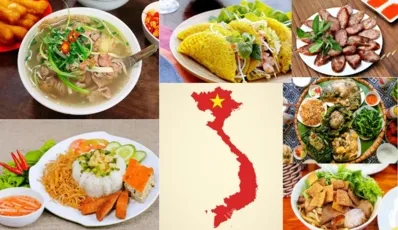
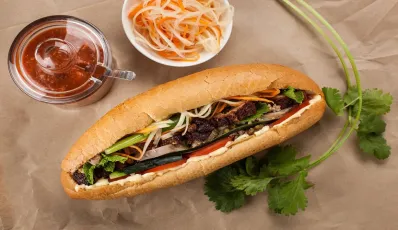

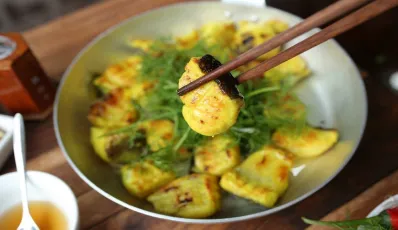
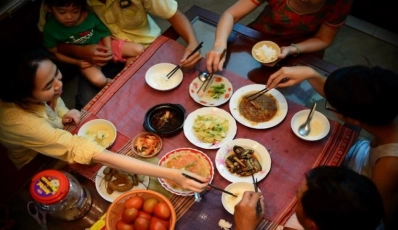
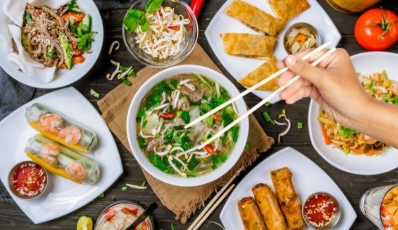
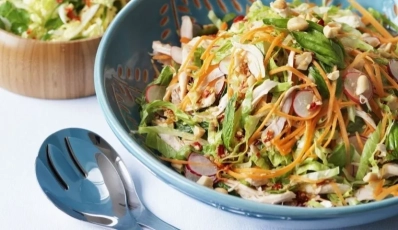





 TRAVELERS' CHOICE 2025
TRAVELERS' CHOICE 2025 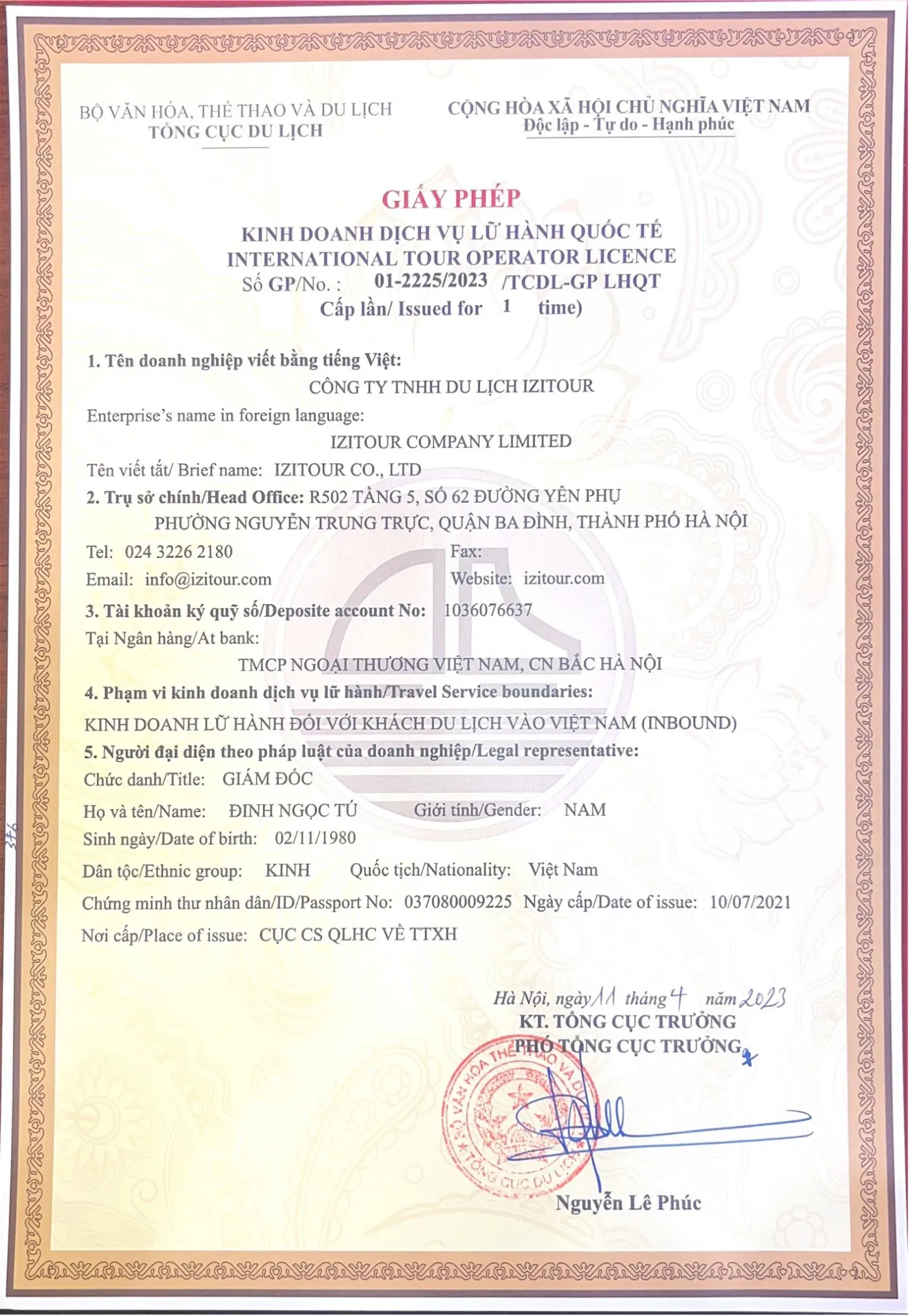



01 Comment
Thailand
Write Reply